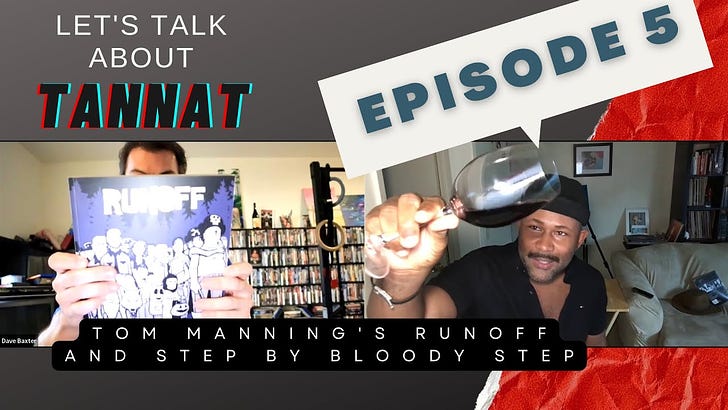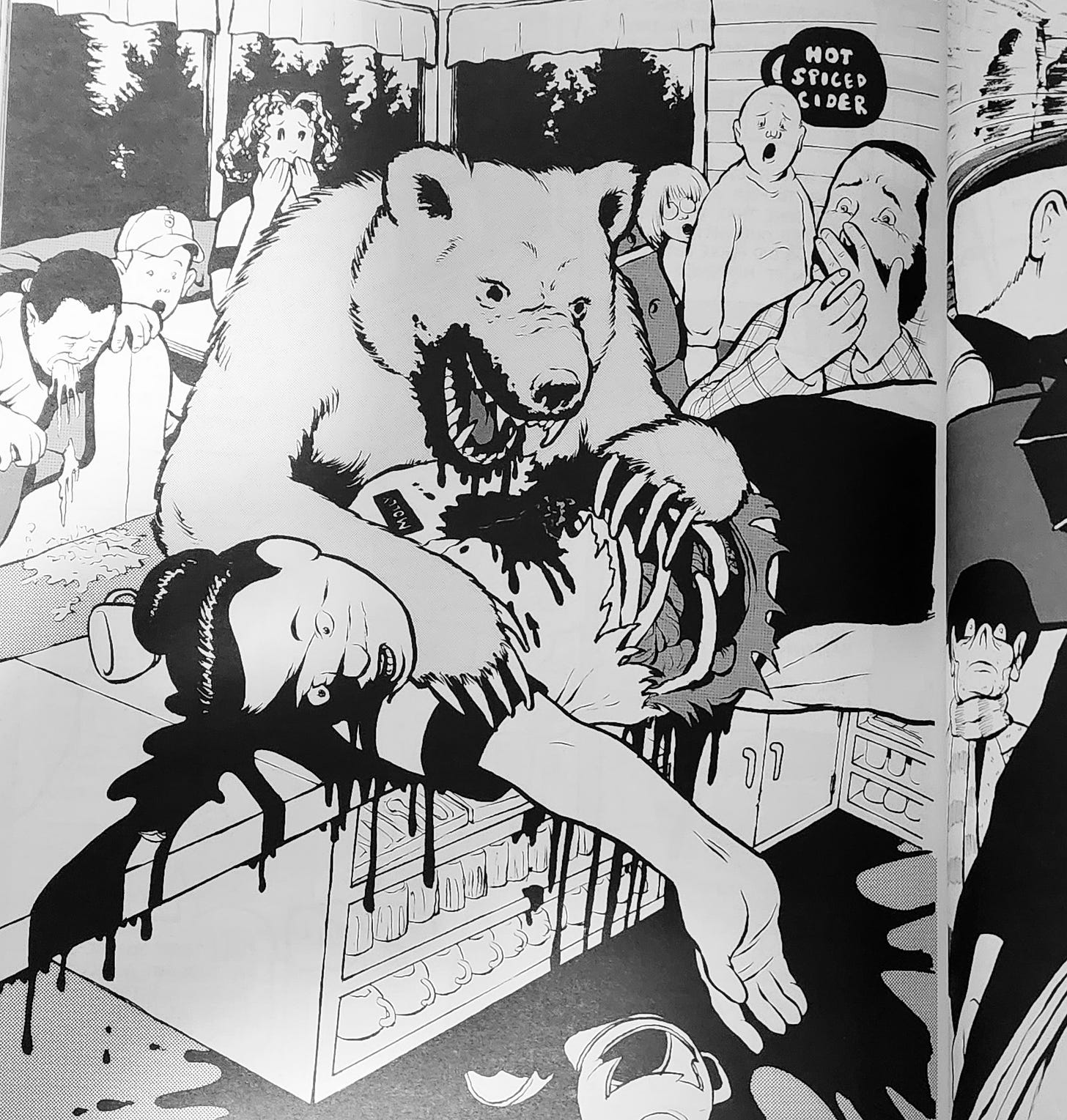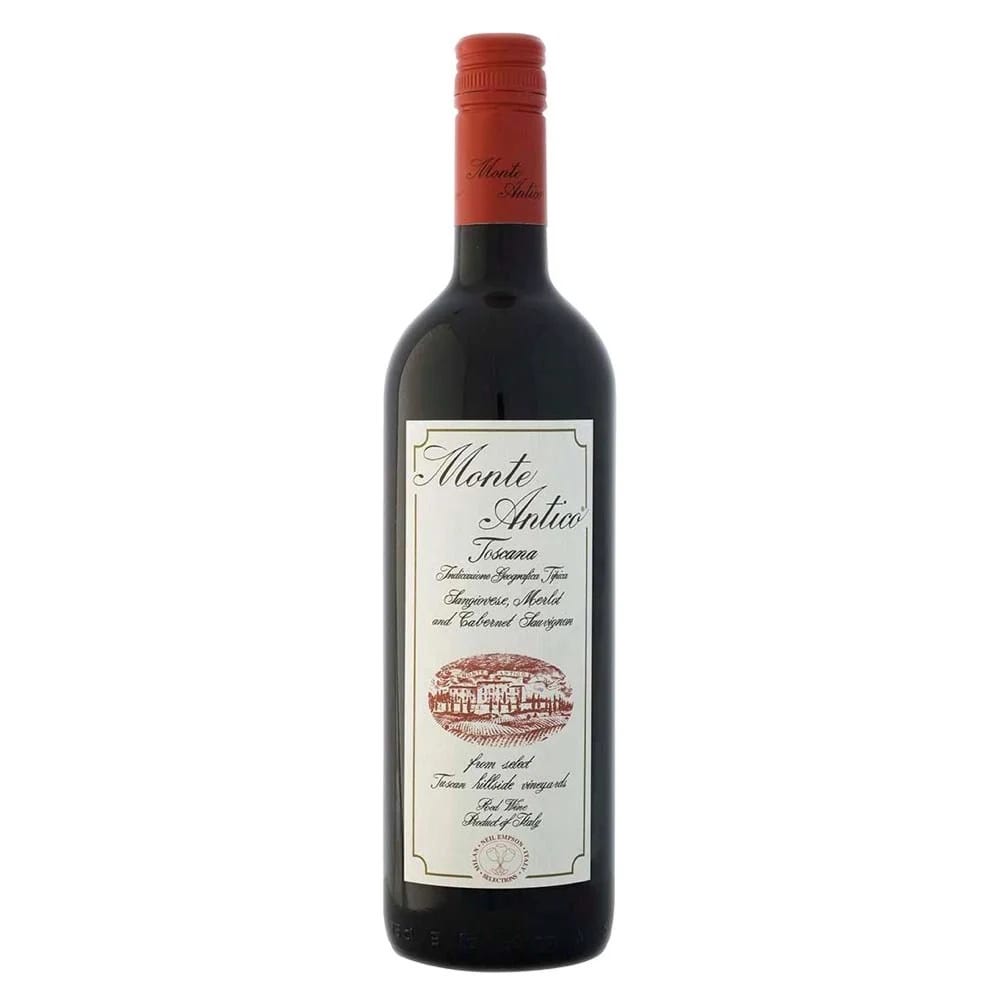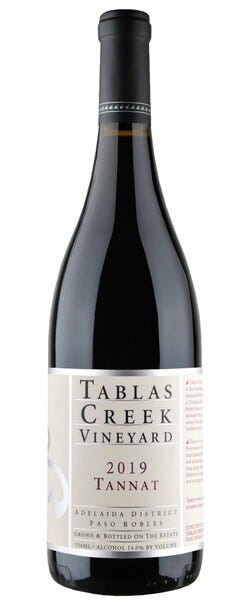Episode 5 Deep-Dive: Wine Escalations and Comic Book Masterpieces
Tom Manning's Runoff, Monte Antico's 2018 Toscana Rosso, Image's Step By Bloody Step, and Tablas Creek's 2019 Tannat
Tom Manning’s RUNOFF (a comic book horror MASTERPIECE)
Retail: $24.95, 450 pages (!!)
Horror and small towns go together like peanut butter & chocolate: perfectly, but it will never be healthy for anyone involved.
RUNOFF sets itself up like a classic Stephen King piece: small rural town isolated from quick assistance from outside help? Check. Cast of quirk-tastic characters straight out of a lost season of Twin Peaks? Multi-check. Supernatural happenings that are misleadingly cutesy then slip abruptly into outright bloodletting and terror? Infinity check.
As mentioned in the show, Dallas and myself used to run a comic book agency that represented comic book creators - something that didn’t exist, so we thought there might be a need! And there was, but the evolution of indie art took a sharp turn toward crowdfunding shortly after we began, and the future was soon cemented in the arena of Kickstarter and IndieGoGo vs. indie artists needing representation to traditional publishers and Hollywood.
But during our agency’s time, we repped Tom and his (at the time) in-the-work book, ERIC, because we’d read RUNOFF and both thought it was absolutely brilliant. Runoff still hadn’t had wide distribution, but the book had fallen into the hands of director Guillermo del Toro and his HELLBOY producer, Lloyd Levin, so the film rights were already secured by them (sadly, naught ever came of that, but so it goes).
We tried to get Dark Horse and Oni interested in Runoff as well as Eric - though the film rights already being secured with Runoff and Eric not yet being complete made both a tougher sell than they should have been. We eventually found a new up-and-coming publisher willing to take the dive with a full omnibus collection of Runoff. Said publisher didn’t last long, alas, but it did leave Tom with many copies of the omnibus to sell.
Runoff wears its many influences on its sleeves: King, Twin Peaks, The X-Files, even Sunday comic strips and super-hero styles enter into it. But what comes out of Tom’s creative churn is something wholly unique. Even better: for all its weirdness, unexpectedness, quirkiness, overly large ensemble cast and overly complicated story - it all makes sense. Shockingly, when the graphic novel wraps up, it all comes together in a jaw-droppingly sensible and logical way. It’s something to behold.
But better have a stomach for the horror bits! Unlike the diner in the upper left hand side here:
Monte Antico 2018 Toscana Rosso
Retail: $14.99
A classic Tuscan (in proper Italian: Toscana) blend of 85% Sangiovese, 10% Merlot, and 5% Cabernet Sauvignon, this is a very soft, supple, and easy going red wine that nevertheless delivers a noticeable amount of acid, alongside red fruit and floral elements of violets and vanilla.
The company itself describes this wine as “The Affordable Super Tuscan1”! Interestingly, the blend never seems to change - it’s always 85/10/5 of these exact varietals. Which makes it a bit suspect as to the quality, year after year, if they’re not fine-tuning it based on the vintage. And it should be noted: any wine this affordable and widely distributed means there is a LOT of it, which means it’s made from high yield vineyards, which tend to deliver lower quality, or at least less intensely flavorful grapes.
That all said, European wines tend to have more year-to-year stability thanks to their highly regulated practices and guidelines, both in growing and vintning. With grapes coming from the same regions, under the same strict regulations, then always aged in the same oak (Slavonian!) followed by 12 months of bottle aging, the wine may vary comparatively little between vintages.
I jotted out and nabbed a bottle for myself from BevMo! for a discounted $11.99 (yay ClubBev!) and Dallas was spot on about this being a “4 day-a-week wine”. It’s affordable, quaffable, well-structured, tangy and delicious, just all-around easy to enjoy. The Cran-Apple Juice of wines! (but not sweet, don’t take these poetic descriptors too literally.)
However, Dallas and I disagree on what pairs well with horror. We recently took to the theaters to watch the latest entry in a horror franchise (which we will be talking about soon on the show! Our first wine and movie pairing!). The film blew us away, we definitely agreed on that. But on the way home, we chatted about what we might pair it with, and my brain went right to big reds whereas Dallas’ went to crisp whites! Talk about a difference of opinion.
Wine Escalations
We eventually landed on the idea of what I like to call “wine escalations” - start light and bright, crisp and white; then move into heavier-bodied whites or lighter reds, maybe a rose in-between; then finally move into “big” reds (Cabernets, Syrahs, Merlots, Petite Sirahs). If you’re still going strong after all that, break out the sweets: Madiera, Sauternes, Sherry, Port, Ice Wine, or other “late harvest” dessert wines.
Personally, I think this is the way to go with Tom Manning’s masterworks. Start light, move toward the heavy and dark. But you need all of the above. Tom’s work has a LOT going on in it. Horror tends to ratchet up the tension, scares, and gore as it goes. No single wine may ever pair perfectly with every element of a well-rounded horror piece.
Si(mon) Spurrier and Matías Bergara’s Image Comic mini-series, STEP BY BLOODY STEP
So let’s get the elephant in the room out of the way: I was WRONG. “Si” Spurrier is indeed short for “Simon” Spurrier. ARE YOU HAPPY? ARE YOU NOT ENTERTAINED???
Anywho, this is the second comic I’ve paired on the show - in only 5 episodes! - that is completely wordless. (The first being Episode 2’s The Cats of Ostia Antica.) I promise this is not a thing with me. I usually pay more attention to the writing than the art in comics, which is why I waxed so fanboyish about the writing in my fave comic of this year, Stud and the Bloodblade, and only gave passing mention to the (admittedly incredible and perfectly executed) art by Jed Dougherty. If anything, I need to kick myself to say more about the art in the comics I read.
But in the case of Step By Bloody Step, I had no idea going in that it was wordless. But what a story was buried beneath its insanely beautiful visuals!
Artist Matías Bergara deserves the lion’s share of credit for this book having the impact that it does. I’ll get to the writing in just a mo’, but the art in a textless story naturally has to carry, well, ALL of the narrative, and unlike “The Cats of Ostia Antica” book, the artist here is not the writer. So the rapport between writer Si Spurrier and artist Bergara is something to be envied. Because as a reading experience, this book works extraordinarily well.
Without dialogue or captions - plus there aren’t any flashbacks, no exposition (obvs), no characters holding up diagrams or charts showing the history of this world or its major players - all we have to work with are the actions depicted on the page.
And to writer Si Spurrier’s credit, the story is not simple. There are scenes that use classic situations and tropes to deliver a crazy amount of information in a small amount of space using zero dialogue. Take a look at this one:
There are 6 characters in this two-page scene. Most of them completely unknown to the reader, and yet you can follow what’s happening without even trying, the costumes/dress, the situation and actions depicted, and use of light and shadow - all are such classic hallmarks of genre storytelling. And yet few writers would think this scenes didn’t require ANY dialogue if they were writing a straight forward comic. If you were Stan Lee or Chris Claremont (both of whom I love, but let’s real-talk here) this page would be littered with caption boxes and word balloons. All of it uneccessary. (Technically there are word balloons here, too, but not to grant the reader information, as they’re filled with a made-up iconographic language.)
And while the individual scenes use familiar genre shorthand to keep the reader from working too hard, the world-building and the core plot are surprisingly quite byzantine. This is somewhat of a mystery story - who are our two main characters? Why are they traveling and to where? What is the elemental force that propels them ever-onward and to what end? Who are all these different creatures and cultures and how do they relate to the central story of the step-by-bloody-step journey our protagonists are undergoing?
I was so impressed by how well Spurrier and Bergara worked together here, I’ve already bought their previous, 3-volume CODA series. I can’t wait to see what they do with a traditionally scripted fantasy comic.
Tablas Creek’s 2019 Tannat
A 100% Tannat - a European varietal that has fallen out of favor across the pond, but Tablas brought some of the first Tannat vines to America in 1990. Or, rather, their French nurseryman did:
We did not originally intend to produce a Tannat. In fact, the Perrins’ French nurseryman included Tannat cuttings of his own volition when he also packed up the Rhone varieties we'd asked for in 1990. These cuttings were entered into quarantine at the USDA station in Geneva, New York and it was a couple of years before we untangled the mystery of how this non-Rhone grape came to be under our account with the USDA. When we traced it back to the nurseryman we asked him why he'd included this (to us) unrelated grape. His response was "I know this grape, and from what I've learned about Paso Robles, it should grow well there. You should try it." When in 1993 the Tannat cuttings were declared virus free and released to us, we decided that with little of our vineyard yet planted we might as well see if he was right. In 1996 we planted just under an acre, and while we received a tiny production that was tossed in at harvest with other varieties starting in 2000, we first harvested enough to ferment on its own in 2002.
—From the Tablas Creek Website (click here to read the whole story)
When I met the winemakers at Tablas Creek during a recent trip there, they also explained that cuttings from the vines at Tablas were later given to other areas of the USA, most notably Virginia (where it’s considered one of their best wine grapes). Tablas even got the BATF (Bureau of Alcohol, Tobacco and Firearms) to recognize Tannat as a distinct grape type in 2002.
As a varietal, it’s resistant to cold and disease; it isn’t prone to overproduction, meaning the vineyard managers don’t have to “thin the shoots”/cull in order to have flavors concentrate in the grapes that remain. That said, the grape produces such intense wine, that in Europe they traditionally use Cabernet Sauvignon to cut it. Let that sink in. And it grows even riper in California heat.
Tannat is significantly tannic (hence the name!) and makes a dark, dense, purple wine. It’s fruit driven - red, blue, and blackberry flavors - yet exhibits surprising minerality and an underlying smokey, tobacco note. It’s a wine that can age well, up to 20 years, but is also delicious/approachable when young, if made in a balanced style. Sit on it for 3-5 years, ideally. But hell, I drank my 2019 with only a year of bottle aging on it, and it was outstanding. But, you know, don’t be me.
Tannat was a beautiful pairing with STEP BY BLOODY STEP. Both are dense, chewy, mysterious, youthful yet ancient, serious yet whimsical, and rare in their respective worlds. The mixed berry and tobacco palate melded gorgeously with the rich post-apocalyptic fantasy palette of the comic. If you can’t find a Tannat, look for similar results with a Petite Verdot, Petite Sirah, or Cali Syrah or Australian Shiraz (same grape, called two different things in two different countries, which both produce bold, powerful wines when grown either place).
What makes a Tuscan/Toscana wine “Super”? The inclusion of non-indigenous grapes. In this case, Cabernet Sauvignon and Merlot (both French varietals)











